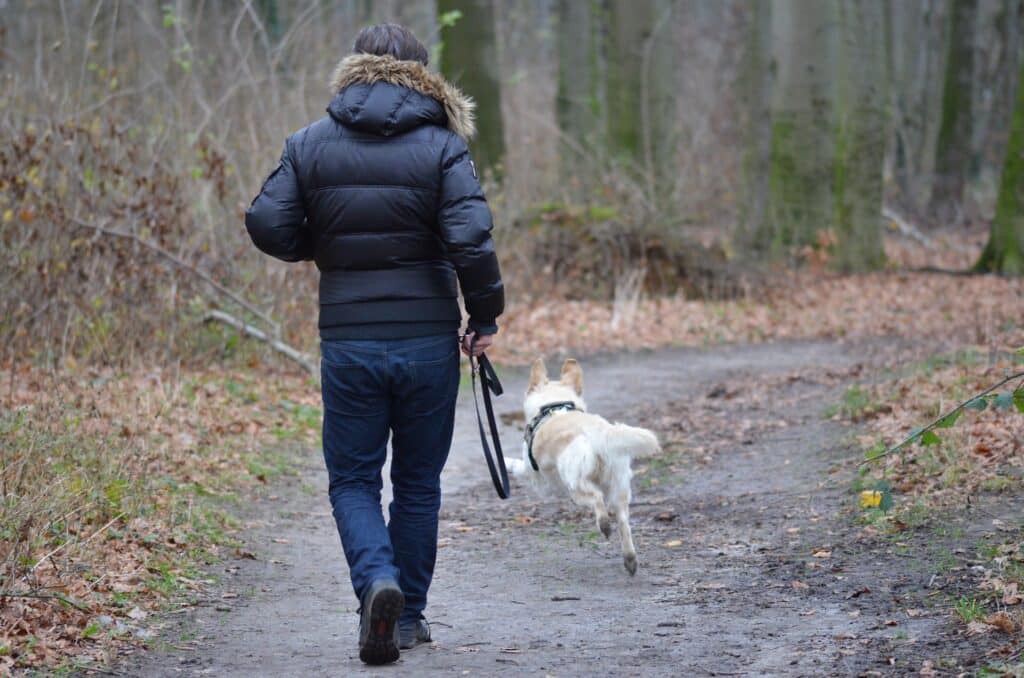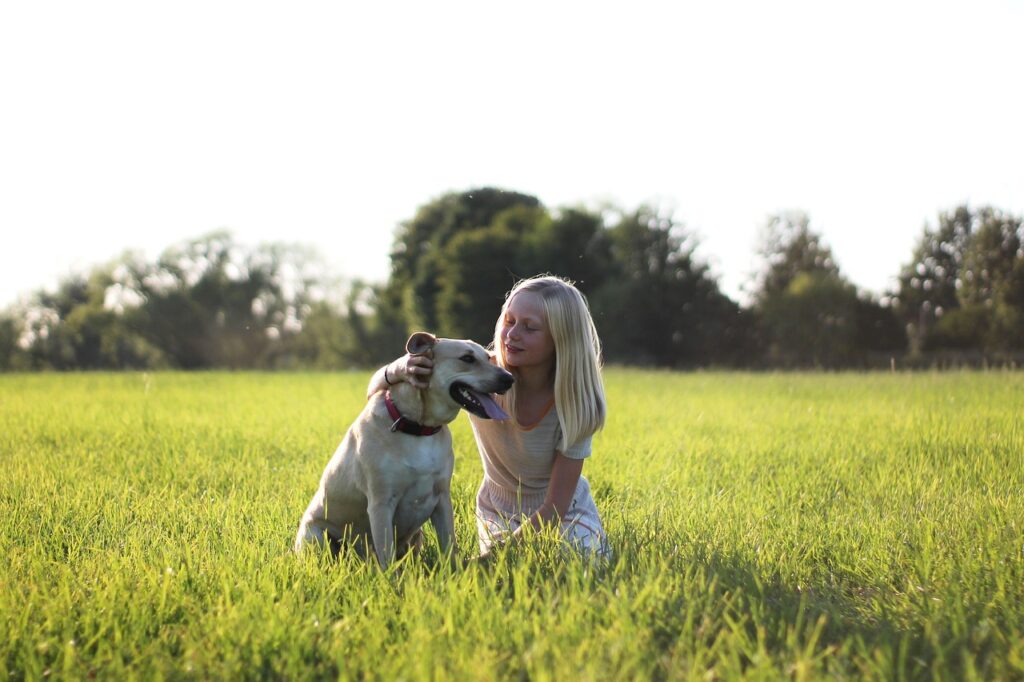Arguably, Labrador Retrievers are one of the most universally adored dogs on the planet. Although initially bred for hunting purposes, this loyal, affectionate, and outgoing breed has become a staple in American and European households.
Labrador retrievers are very active dogs and enjoy vigorous activities to keep fit. With an average lifespan of 10 to 12 years, they are intelligent, friendly, and compassionate creatures and can bond deeply with people of all ages. For over 20 years, Labrador retrievers have been the most popular dog breed stateside and beyond.

Table Of contents
History of Labrador Retrievers
Labradors were developed by crossbreeding St. John’s water dogs and British hunting dogs. The breed is named after the Labrador region in present-day Canada. By the 1800s, they had dramatically increased in popularity amongst British nobles.
Labrador dogs were imported from Newfoundland to be employed as sporting, hunting, and water fouling dogs. These dogs were valued for their trainability, obedience, and dedication.
“Buccleuch Ned and Buccleuch Avon” are considered the ancestral dogs of all modern Labradors. In 1903, The Kennel Club first acknowledged the breed, and the first appearance of retrievers in the American Kennel Club was in 1917.
Although Retrievers have historically been hard-working dogs, Labrador Retrievers have come a long way from their Canadian roots, finding popularity as pets, guide dogs and even therapy dogs for the elderly and disabled.
Labrador Retrievers Information

Labrador Retrievers are medium-sized and well-built dogs characterized by heavy, weather-resistant, dense coats, clean-cut skulls, and “otter” tails. Overall, Labradors should be able-bodied, well-balanced and agile dogs. The following Labrador Retriever information and standards are specified by the American Kennel Club (AKC).
Size:
Labrador Retriever information from the AKC specifies that Labradors’ heights from the withers should be 55 to 62 centimeters for males and 55 to 60 centimeters for females.
The AKC has also set an optimal weight of 25–36 kg for males and 25–32 kg for females. In summary, they are medium to medium-large-sized dogs.
Head Shape:
The dogs should have broad and well-developed skulls, along with full, pronounced eyebrows producing an oblong-shaped head. Labs should have a powerful set of jaws, with a moderately sized muzzle, along with a pigmented snout, usually black or brown.
This breed is known for its distinctive eyes, described as “kind,” reflecting on the intelligent, affectionate, and well-tempered nature of Labrador Retrievers.
Coat and Color:
Labrador Retrievers have weather-resistant “short, dense, straight, and slightly oily coats with a rough hand-feel. They are double-coated, with a softer inner coat. Having black, yellow, or chocolate-colored fur is one of the essential Labrador Retriever characteristics.
Tail:
Another unique feature of Labrador Retrievers is their tails, which are described as “otter” shaped due to their distinctive features; thick at the base and tapered at the tip, and an unusual rounded shape reminiscent of an Otter.
Labrador Retrievers Characteristics and Traits

Just like every other dog breed, Labrador Retrievers have some defining characteristics and traits. These qualities and attributes can be divided into four sub-categories; social, physical, personality, and family life.
Social traits:
The way Retrievers interact with their owners, family, and others define their social nature. These dogs are pretty easygoing and friendly. Labradors have a pleasant temperament, are
playful and protective of their loved ones, and are open and adaptive to new people, places, and experiences.
Temperament:
Labradors are cool-tempered dogs. They are described explicitly as kind, outgoing, and pleasant-natured. Labs are not aggressive towards humans or other animals and are very peaceful, warm, and eager to please.
Playfulness:
Labrador Retrievers are energetic and stay playful a long time after puppyhood; they can sometimes be rambunctious and unruly. This fun-loving trait makes them excellent companions for young children. Playing fetch, as well dog sports such as agility and frisbee, are enjoyed by Retrievers very much.
Protectiveness:
These dogs are moderately protective, as they are very likely to react to potential threats and triggers, such as passers-by, water sprinklers, and small animals. They are also particularly protective towards young children, as they can sense their naivety.
Adaptability:
This breed is highly adaptable to changes. This includes changes in day-to-day life, the weather, living conditions, and so on. Thus these dogs can adapt to both the serenity of country life and the fast pace of city life. However, due to their large size, they aren’t well suited for an apartment life.
Openness:
Labrador Retrievers are very lovey-dovey dogs. Unlike other breeds, they are not reserved or hostile towards strangers. Labs love humans and will always crave pets and affection from them. They will eagerly socialize and befriend other humans and pets.
Labrador Retrievers Physical Characteristics
These dogs have hallmark physical features that make them easily distinguishable from other dog breeds.

Shedding:
Labrador retrievers are double-coated dogs. Thus they shed quite heavily and require constant brushing and grooming. Shedding can trigger allergies and need homes to be vacuumed, lint-rolled, and cleaned more frequently.
Drooling:
Despite how sweet Labs are, unfortunately, they are pretty prone to drooling. Thus raising one may lead to unfortunate splotches and incidents.
Coat grooming:
Even though retrievers are short-coated, they can shed quite a lot. Thus they require a lot of grooming and brushing. Ideally, coats should be brushed weekly with a tooth comb to avoid matting and discomfort for the pup.
Labrador Retrievers Personality and Characteristics
Labrador Retrievers are ranked as the seventh most intelligent dog breed. Thus they display more complex and witted behavior compared to other dogs. They possess an inherent restless and energetic nature. They are easily trainable, highly active, require endless mental stimulation, and bark up quite an earful.

Trainability:
Labrador Retrievers are among the most trainable breeds out there due to their friendly, considerate, and eager-to-please nature. Labradors are brilliant and curious animals who enjoy making their owners proud. The easy trainability of Labrador Retrievers makes them very useful guides and therapy dogs.
Energy:
Notoriously very energetic, labs look forward to embarking on new adventures and activities. Ideally, Labs should get at least two hours of exercise daily through activities such as playing fetch, walking, and tug-of-war. Not getting enough exercise can lead to them displaying
destructive behavior.
Mental Simulation:
As you can guess, zestful labradors require extensive mental simulation. As not only are they very active and energetic, Labs are also purpose-bred dogs who need activities to do to stay happy and healthy. Lack of mentally stimulating activities can also result in dogs engaging in destructive and clingy behavior.
Barking:
Labs are pretty noisy, using barking and howling as a way to express themselves. However, they tend to bark more when distressed from a lack of suitable physical and social activities. This breed also tends to bark at perceived threats and triggers.
Family Life:
Labrador Retrievers are very amicable and sociable, meaning that they’ll be the life of the party and family. Their adaptability and endearment towards family members, children, and other pets make them a delight to be around.
Behavior with family:
As stated previously, Labradors are loyal and amiable dogs. They thrive in the company of family and friends. Their people-oriented nature and innate desire to be social make them excellent family dogs, as they treat everyone as their very best friend.
Behavior with young children:
By nature, Labs are patient and obedient. Thus they are a good choice for families with young children. Their cheerful personality, playful behavior, and endless energy make them well-suited to live with young children. Labradors can sense that babies and children cannot defend themselves and act more possessively and gently around them. However, parents should adequately introduce their children and dogs, and monitor playtimes, as Labs are big dogs and may unintentionally scratch or bruise.
Behavior with other dogs:
Generally, Labrador Retrievers are very adaptable to other breeds of dogs. Given their social and active nature, they love to play and chase around with other dogs. However, even the most well-behaved dogs may act out and dislike other pups. However, proper training, guidelines, and instructions can remedy any issues dogs have cohabitating with each other.
Caring for Labrador Retrievers
Owning a pet requires extensive work, and Labrador Retrievers are no exception. Caring for a pet is a sizeable commitment that entails patience and understanding; pets depend on us for food, shelter, and necessities. But at the end of the day, the gratification of raising such a lovable and loyal Retriever outshines all the hard work that goes into raising them.

Health and Diseases:
Labradors are pretty healthy dogs in general. However, just like all breeds, they are prone to a couple of health conditions. Most responsible breeders ensure screening breeding stock with genetic diseases. However, many Labrador retrievers still suffer from these ailments. Some common Labrador health conditions are; elbow dysplasia, arthritis, and ear problems.
Elbow dysplasia is a hereditary disease, and medium to large dogs suffer from it. This condition develops when the cartilage in the bones of the elbow joint forms abnormalities. This condition worsens as the dog grows and may lead to arthritis. Although exercising can provide temporary ease, long-term surgery can offer a permanent solution. Arthritis in Labradors can occur due to wear and tear, pre-existing complications from elbow dysplasia, and sustained injuries. As a result of arthritis, dogs can become more reluctant to games, exercise, and lead to “stiffness.” Arthritis does not have any cure but can be managed through anti-inflammatory medications and maintaining a healthy weight.
Ear problems are common in all dogs, ranging from irritation from objects stuck in the ear canal, parasites, allergies, and infections. These result in a condition known as “otitis,” which causes an intense, burning and itching sensation in their ears. Labradors should have their nails trimmed frequently. And just like all other canines, their teeth should be brushed thoroughly to
avoid contracting tooth or gum diseases.
Exercise and grooming tips for Labrador Retrievers
Labrador Retrievers are lively and zealous dogs and need a lot of activity. Sometimes they become hyperactive and destructive to release their energy.

Daily exercises are vital in keeping your dog fit. Ideally, they should be getting at least two hours of training daily. Just like their ancestors, modern-day labradors still love swimming and fetching activities, as well as hiking, hunting trips, and canine sports. However, sometimes give your furry friend a break, as they get carried away and risk injuring themselves, especially during puppyhood.
Nutrition Tips for Labrador Retrievers

The nutrition required by labradors depends on their age; for growing retriever puppies, having the right balance of vitamins, minerals, calories, and protein is critical. As this breed is fast-growing, veterinarians advise puppies to be fed dog food contrived for rapidly growing species so that the dogs don’t suffer from deficiency and develop joint pains later on. Adult Labradors should be provided two portions of pet food daily. Food intake should be monitored, as these dogs are susceptible to rapidly gaining weight and suffering from obesity.
Training your Labrador Retrievers

Getting Labrador Retrievers training from early on is crucial. Training retriever puppies between the ages of seven weeks and four months by exposing them to numerous environments, people, and situations, alongside slowly starting obedience training, will help the pup become a happy, well-mannered, and well-adjusted adult in the future. These bright dogs respond well to playful training methods and positive reinforcement.
Grooming Tips for Labrador Retrievers

Labradors shed quite frequently. Thus regular combing and bathing are necessary to keep your dog clean. While bathing, check your Retriever for any lumps, parasites, or growth, and check their ears and eyes for any signs of discharge or wax. Brushing their teeth and cleaning their ears are crucial to prevent bacterial ailments from affecting the dog.
conclusion

Getting a dog is a big decision and depends on many factors, such as your family size, the ages
of your household members, and where you live, amongst many other variables. Although raising a dog is hard work, they inject a different dimension of happiness, fulfillment, and gratification into you and your family’s lives. From the Labrador retriever characteristics and traits discussed above, it would be safe to say that they are quite worthy of being your best friend.




